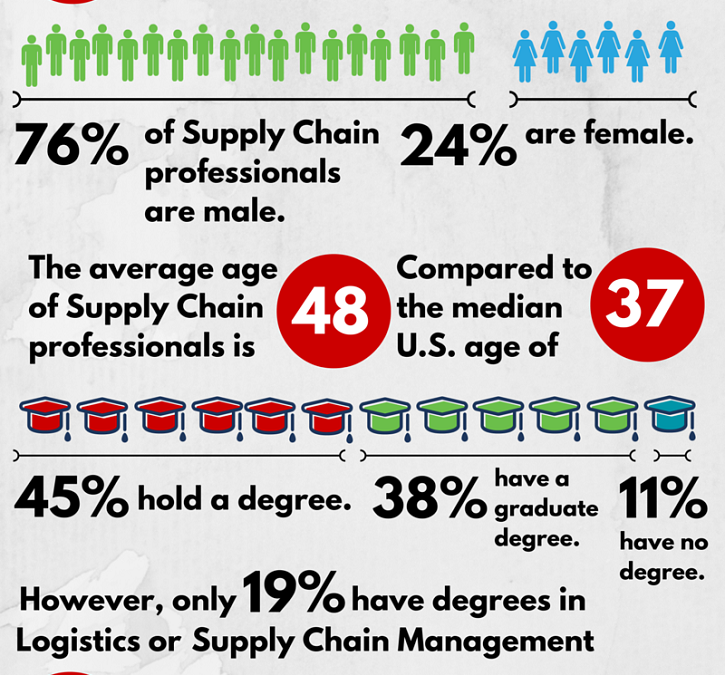
by Elizabeth Hines | Aug 25, 2016 | Blog, Data/Analytics, Leadership, Strategy
Forget tracking traditional metrics and focus on decision-quality data that helps front-line managers do their jobs.
It’s safe to say that the clients I engage with fall into two categories when it comes to business data: those that are drowning in it, and those that ignore it altogether.
The ones that are drowning in data know all the relevant facts that keep them out of trouble with their boards or their senior executives, but struggle to tell you what really drives their business costs or profits. The ones that ignore the data are the savvy veterans that rely on their historical win/loss records in their business, but ask them to change course or innovate, and they are like fish out of water.
Chances are you’ll fall somewhere close to those two camps, and for some time, I did as well. Then that I realized that tracking data for the sake of “tracking” was a waste of time for me and for my teams.
There is data, however, that should be tracked relentlessly and used in all of your decision processes. I call this “decision-quality” data. These are the numbers that drive your business strategy and execution.
What is decision-quality data?
Decision-quality data goes beyond the traditional profit/loss packages that are churned out every quarter and disseminated to your business chieftains. Decision-quality data sets are the building blocks and the levers of your business. Examples include areas of your business that can be affected by the execution of your employees.
Put simply, your sales employees may not be able to directly affect your finance treasury function, but working together with your finance team, they can affect cash flow by selling credit-worthy customers, cutting better financial deals, and, when necessary, helping in the collection process.
The same can be said of your purchasing professionals teaming with distribution leaders and finance team. This team can coordinate at the front line to cut costs and reduce inventory spend by developing inventory and financial metrics that matter to them and the company overall. By working in concert, they have the ability to solve the problems that arise and avoid pitfalls in real time instead of reacting when the quarterly metrics come out.
Quite frankly, if you are collecting and looking at data, but not taking action as the result of it, STOP. You won’t miss a thing, and your team will thank you for saving them time to spend on more productive activities.
Don’t fall into the data-cycle-trap dictated by data tracked on a calendar basis for the sake of tracking. Ask your teams what data they need to be effective, and simplify the way for them to get it in near real time.
Once this type of data is in the hands of a cross-functional team of front-line managers, task them with the needed improvement, and watch them make dramatic impacts in your overall business performance and customer experience and, in turn, your profits. The results will be better and more sustained than if you drove them with a mandate from the top because these managers live and breathe in the environment that created the data in the first place. Their cross-functional nature and familiarity with the issues are a winning combination.
Related posts:

by Jennifer Hart Yim | Aug 24, 2016 | Blog, Manufacturing & Distribution, Strategy, Supply Chain, Talent

The Supply Chain industry is changing, while it’s becoming harder for companies to hire at the same time. These supply chain demographics provide a picture of the industry today.
This guest post comes to us from Argentus Supply Chain Recruiting, a boutique recruitment firm specializing in Supply Chain Management and Procurement.
Everyone knows the Supply Chain field is changing. Recently, one of the best Supply Chain publications out of the U.S., Supply Chain 24/7, released a report that examines the demographic trends underlying the industry. The report, titled “A Portrait of the Supply Chain Manager,” used research survey data from Peerless Research Group and APICS to present a picture of the typical individual working in Supply Chain. The survey asked a number of Supply Chain and talent-related questions, such as:
- What percentage of Supply Chain professionals received a raise last year?
- What percentage of Supply Chain managers hold a degree?
- What percentage of companies are willing to pay above-market compensation for the right people?
And more. These issues are sure to be of interest, whether you’re looking to hire in Supply Chain or just to get a holistic picture of the field. So we put together this spiffy infographic that highlights the answers to these questions and some other interesting datapoints from the report. Check out the infographic below!

We hope you found the supply chain demographics infographic informative, and we encourage you to dig into the full report for even more insights about where Supply Chain professionals stand and where the field is going. And (as always) stay tuned for more info and perspective about Supply Chain and talent from Argentus in the coming days and weeks!
Related posts:

by Fronetics | Aug 23, 2016 | Blog, Content Marketing, Logistics, Marketing, Social Media, Strategy, Supply Chain

TotalTrax leverages content marketing to increase web traffic, generate high-quality leads, and, ultimately, grow business.
TotalTrax, Inc., is a provider of real-time vehicle, driver, and inventory tracking technologies for manufacturing and warehouse operations. Despite a decade of positive growth, the company knew it was missing opportunities for new business because of its lack of a clear digital strategy.
That’s why TotalTrax hired Fronetics Strategic Advisors. The firm created and implemented a multi-channel content marketing program designed to increase the company’s digital footprint and accelerate growth.
Content marketing can help a business elevate its brand position by producing content that demonstrates industry expertise, offers valuable information, and builds trust with their target audience. Example benefits include:
- Increased brand awareness
- Higher referral traffic
- Better lead generation and nurturing
- Improved customer loyalty and trust
- Decreased marketing cost and higher ROI
Fronetics evaluated TotalTrax’s existing digital assets. Leveraging extensive market research, the firm helped refine the company’s messaging and content distribution to better engage potential customers. Fronetics then implemented the customized content marketing strategy to help TotalTrax fully leverage its web presence to bring about new business.
The results
In a 24-month period, TotalTrax realized significant gains in web traffic, quality leads, and brand awareness. Key results included:
- 19% increase in overall web traffic
- 500% increase in traffic from social media
- 244 high-quality leads
- 30% net increase in new customers
To learn more about Fronetics’ strategy for TotalTrax, download the free case study below.

Related posts:

by Elizabeth Hines | Aug 22, 2016 | Blog, Logistics, Manufacturing & Distribution, Strategy, Supply Chain

Improve your company’s financial performance by implementing a risk-management strategy that plans for everyday events and disruptions.
Supply chain disruptions can have a significant impact on business and financial performance. A recent PwC and the MIT Forum for Supply Chain Innovation survey found a strong correlation between the maturity of businesses’ risk-management processes and reduced decline in operational performance indicators in the face of disruption.
A supply chain company’s need for a well-developed risk-management strategy is clear. That means planning for disruptions beyond the big-impact events, like environmental catastrophes, cyber attacks, and geopolitical instability. Companies need to be better prepared to handle day-to-day bumps in the road.
Managing everyday risks
Managers will often consider cataclysmic events but ignore the smaller risks that create friction in the supply chain. Dealing with these smaller factors in a reactive and piecemeal fashion is inefficient and ineffective and can significantly hurt your company.
Consider the following tips when developing an effective risk-management strategy that focuses on the everyday risks:
1) Employ a robust strategy that is always evolving.
Consider all of the factors that currently influence your supply chain, and be vigilant in terms of new technologies or emerging risks that could impact operations in the future.
2) Put a leader in charge.
Choose someone experienced in crisis management, negotiation, and critical problem-solving. This leader should be skilled in diplomacy and remaining calm under pressure.
3) Make sure the strategy is flexible.
A strategy that it uncompromising and rigid can exacerbate issues.
4) Define your comprehensive process.
Develop a clearly defined process to mitigate events such as cash-flow issues, inventory risk, competitor interruptions, client credit risk and default, data backup and recovery, key client attrition, employee satisfaction and retention, social media use and abuse, and reputation recovery.
5) Include human resources in the strategy.
Consider moving employees into new roles as a solution. Moving an employee into a new role permanently (or for a specified period to deal with an event) can help mitigate issues.
6) Don’t hide the issue.
If there is a problem, be sure that the clients hear about the problem from you. Be clear, concise, and honest when you contact clients. Explain what the issue is and what you are doing to address it.
7) Get everyone on board.
Take the time to make sure everyone is educated about the strategy and who is in charge. If just one person knows the strategy, it will not be effective.
Related posts:

by Fronetics | Aug 18, 2016 | Blog, Content Marketing, Marketing, Strategy

Transactional emails offer prime real estate for driving further customer engagement or action.
Your business probably invests a lot of time and effort creating marketing emails to send to your prospects and consumers. But have you thought much about the content of your confirmation and thank you emails?
New findings from IBM Marketing Cloud’s 2016 Email Marketing Metrics Benchmark Study suggest you should. The survey “examines messages sent by nearly 750 companies and 3,000 brands in 2015, using a wide variety of measurements to establish benchmarks on customer engagement (via multiple open, click, and device/email client metrics) and list churn (hard bounces, unsubscribes, and complaints).”
One important finding relates to how recipients engage with transactional emails, messages confirming a purchase or an action (such as signing up for a newsletter). In almost every respect, transactional emails outperform non-transactional emails. For example:
- Transactional emails generate roughly 2x the open rates of non-transactional emails.
- Transactional emails generate roughly 3x the click-through rates of non-transactional emails.
This should not be a surprise, since these emails are based directly on a person’s purchase or action. But what many companies don’t realize is that these messages represent an opportunity to drive further customer engagement or action. Adding a prominent call to action can encourage the recipient to join your email list, make an additional purchase, or otherwise move further down the purchase path.
Instead of a simple “Thanks for your purchase!” email, put a little thought into how you might keep that person interacting with your business. Here are a few ideas:
1) Ask them to review their purchases.
Include a link to the recipient’s account or orders page. This gets them back on your website, where you can add additional calls to action, advertise related products, or encourage them to join a loyalty program.
2) Offer an incentive for future purchases.
Encourage recipients to buy again soon by providing a discount code for their next transaction. This also helps build brand loyalty by showing customers you value their business and want them to come back.
3) Request they follow you on social media.
Provide links to your various social media accounts to build additional touch points with your customers and prospects. Suggest they post photos of themselves using the products they purchased, share their purchase (or link to the newsletter sign-up, etc.) with their followers, or enter your contest or giveaway happening on these platforms.
4) Show them how to use their purchase.
Link to content that can improve their experience with the product or service they just bought. Step-by-steps guides, how-to videos, images of other buyers using the product: give them valuable support to improve their user experience and to keep them engaged with your content.
5) Display similar or related products.
What else do customers buy when they make the same purchase? Do you have other products or services that go along with it? For example, someone buying a hammer might also be interested in nails, toolboxes, or screwdrivers.
6) Ask them to join your loyalty or rewards program.
This is another way to offer incentives for future purchases and exclusive access to deals while your business gains additional information about the person.
7) Request they sign up for your newsletter, join your email list, or subscribe to your blog.
Encourage them to stay in the loop by opting into your content. You’ll stay in the sights of potential buyers that aren’t ready to make a purchase, and be on their mind when the time comes to buy.
Related posts:

by Fronetics | Aug 17, 2016 | Blog, Strategy, Talent

If your job has left you to feeling stuck in a rut, try these steps to improve your professional life.
Summer vacations are over, and the year is more than half gone. Perhaps all those best-laid plans for boosting your career this year have yet to come to fruition. You may be feeling as burnt out as those last colorful leaves before they surrender to the fall.
If this frustration sounds familiar, it may be time to shake things up and move your career in a new direction. Carpe autumn!
Here are 9 tips to propel your career forward:
Make the move
Unhappy at your present job? Identify the reasons. If you are frustrated with your current role but you like your company, inquire about other positions within the organization. If none are a good fit or there are no growth opportunities, consider looking elsewhere. Use every job-search tool available — network, use a recruiter, and/or work with an executive search firm.
Network
There is tremendous opportunity in networking. Studies have found that the majority of jobs (between 49% and 80%) come about through networking. But networking offers more, like professional development and sage advice. You will make important connections that could bring you career success.
Create your own brand
A quick search on the internet or on LinkedIn and you will see: You are a brand. First impressions are now inclusive of your Facebook page, personal blog, your Instagram page, and Twitter account. Even your pins on Pinterest say something about you. Keep that in mind as you are posting personal content.
Work for someone intelligent
Working for someone smart brings you more knowledge and critical thinking skills simply through observation and example. You will grow professionally and personally.
Plan for the 12-24 months
Don’t get hung up on making a 10-year career plan. Look for the right opportunities, be flexible, and know the direction you are headed in, but don’t lock into a long-term direction.
Use your muscles
Research has found that a regular exercise routine can make you happier, smarter, and more energetic. Being fit can also brand you — giving a perception of health and stamina that signifies effectiveness, according to the Wall Street Journal.
Explore something new
Is there something your colleagues are doing or using that you aren’t? LinkedIn or Twitter for example. Take the leap!
Find your balance
Research by the Families and Work Institute found that 55% of respondents reported feeling overwhelmed by everything that is on their plate. A different survey found that 80% of people are unhappy with their work-life balance. Look at your priorities and keep only what matters.
Take a vacation
Have leftover vacation days? About 57% of Americans don’t use their vacation time. Taking time off is important to both your mental and physical health — and it has a positive impact on work performance and productivity.
Related posts:









